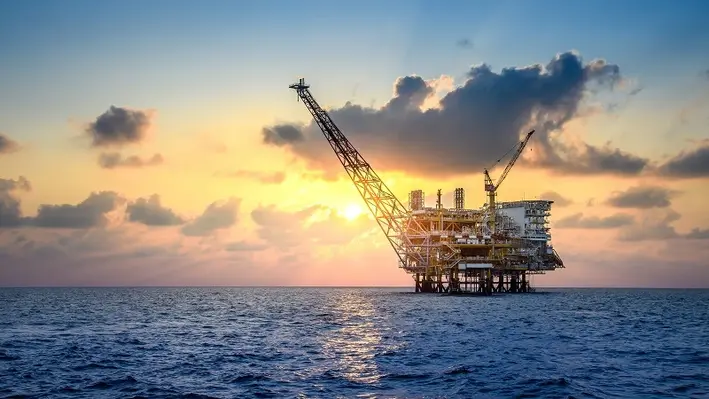

QatarEnergy has signed a production sharing agreement (PSA) for shallow-water Block S4 offshore Guyana, formalising its participation in the block awarded during the country’s 2022 licensing round.
Saad Sherida Al-Kaabi, Qatar’s Minister of State for Energy Affairs and President and CEO of QatarEnergy, said the agreement aligns with the company’s strategy to expand its international upstream footprint.
“We are pleased to secure this exploration block in Guyana, further building on the strategy to expand our global upstream exploration activities,” he said.
“I would like to thank the government of the Cooperative Republic of Guyana and our partners in the block for their valued support and cooperation. We look forward to working together to deliver on our exploration objectives.”
Under the PSA, TotalEnergies will operate the block with a 40% stake. QatarEnergy will hold 35%, while Petronas will take the remaining 25%.
Block S4 spans 1,788 sq km and lies around 50–100 km offshore Guyana, in shallow waters ranging from 30–100 metres. The agreement further strengthens QatarEnergy’s growing presence in the Americas’ exploration landscape.
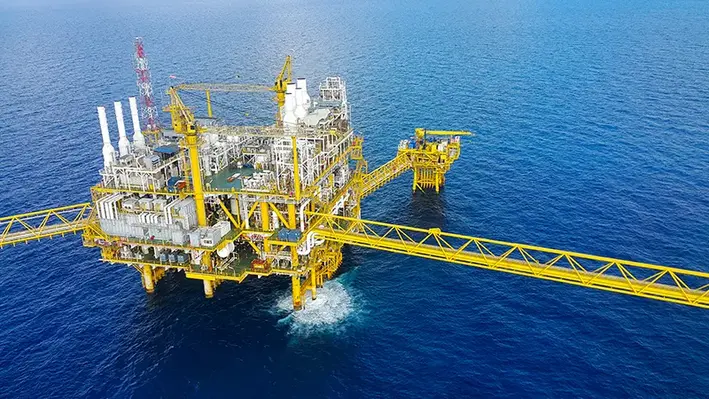
 Talos Energy Inc reported strong operational and financial results for Q3 2025, reflecting disciplined capital management, production growth, and shareholder returns.
Talos Energy Inc reported strong operational and financial results for Q3 2025, reflecting disciplined capital management, production growth, and shareholder returns.
The company produced 95.2 thousand barrels of oil equivalent per day, with 70% from oil and 76% liquids, generating US$103.4 million in adjusted free cash flow.
Talos returned over US$100 million to shareholders in 2025 through share repurchases and continued progress on its Optimal Performance Plan, exceeding the year-end target of US$25 million by realising over US$40 million in cash flow enhancements.
Full-year guidance was improved due to higher production, lower operating expenses, and reduced capital expenditures, while the balance sheet remains strong with US$332.7 million in cash and low net debt.
Operationally, Talos continues to expand its deepwater portfolio in North America. Notably, the Daenerys exploration prospect on Walker Ridge blocks 106, 107, 150, and 151 delivered a successful discovery in sub-salt Miocene sands, with an appraisal well planned for Q2 2026.
The Monument discovery in Walker Ridge blocks 271, 272, 315, and 316 is set for development as a subsea tie-back to the Shenandoah facility, with the first well expected to spud in early 2026 and production targeted later in the year. Talos’s disciplined drilling and exploration strategy in North America, combined with operational efficiency and capital discipline, positions the company to enhance production, advance resource delineation, and sustain long-term growth.
To read more about talco's performance visit here
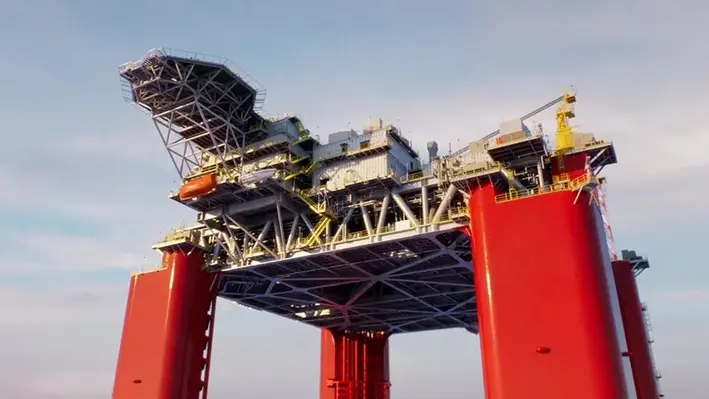
 Another significant deepwater project following the Kaskida floating production unit for bp, Seatrium Limited has now landed a contract from the major for the engineering, procurement, construction and onshore commissioning of the Tiber FPU as well in the Gulf of America.
Another significant deepwater project following the Kaskida floating production unit for bp, Seatrium Limited has now landed a contract from the major for the engineering, procurement, construction and onshore commissioning of the Tiber FPU as well in the Gulf of America.
William Gu, Executive Vice President of Seatrium Energy (International), said, “The Tiber FPU award marks a significant milestone in our relationship with bp and underscores the strength of our series-build approach for the Gulf of America production units. It also highlights Seatrium’s expanding foothold in the FPU segment, delivering exceptional quality and efficiency with uncompromising safety through maximum on-ground completion and single-lift capability. Drawing on lessons learned from our growing portfolio of FPU projects, we will continue to translate experience into execution excellence. Our commitment remains steadfast in supporting bp’s offshore developments.”
The Tiber FPU will have a production capacity of 80,000 barrels of crude oil per day and incorporate advanced technologies to enhance operational efficiency and safety. It will produce from the Tiber and Guadalupe fields in the Keathley Canyon area of the Gulf of America, about 300 miles southwest of New Orleans, in water depths of around 4,100 ft.
The design of the Tiber FPU will largely follow that of Kaskida FPU, backed by Seatrium's well-established expertise in designing from the last project. The company has chosen this strategy to leverage key engineering and commissioning support partners, as well as trusted equipment suppliers, ensuring consistent and streamlined execution to get the ball rolling for the large-scale offshore project.
The topside for the Tiber FPU will be installed onto the hull using Seatrium’s single-lift integration methodology, enabled by its Goliath twin cranes with a combined lifting capacity of 30,000 tonnes. This approach allows the topside to be fully completed and tested at ground level, maximising readiness, safety and efficiency.

 With an aim to expand its engineering and procurement services to support operations and decommissioning in the North East, Tattva Group has announced a UK£2mn investment in Project Development International (PDi).
With an aim to expand its engineering and procurement services to support operations and decommissioning in the North East, Tattva Group has announced a UK£2mn investment in Project Development International (PDi).
This will support not only the advancement of PDi’s offerings in subsea engineering and decommissioning but also enhance its wider engineering services in topsides. This allows the company to serve the nation at an apt time, as it navigates policy uncertainty and supply chain volatilities.
Welcoming the move as 'a vote of confidence' for PDi, the company's new CEO, Girish Kabra, said, “Tattva Group’s commitment to PDi — especially amid current policy uncertainty from the UK Government and pressures facing the supply chain – is welcomed, to boost workforce confidence and support the collective regional effort to retain skills in the North Sea.”
“This strategic capital injection of UK£2mn empowers us to expand and elevate our engineering and procurement services, with a sharpened focus on supporting late-life asset management and decommissioning activities. We’re committed to delivering even more flexible and value-added solutions, addressing the evolving needs of the UK energy sector and solidifying PDi’s position as a key partner in the North Sea’s future. This investment means greater capacity, deeper expertise, and a more robust offering to help all our clients and customers navigate their operational and decommissioning challenges efficiently and effectively.”
Explaining the copmpany's strategy behind the move, TR Narayanaswamy, Group Chairman of Tattva, said, “We see a gap in the market where operators are seeking more flexibility and value-added service offerings...With its refreshed management team and focus, PDi is uniquely positioned to meet that need and deliver long term value to clients.”
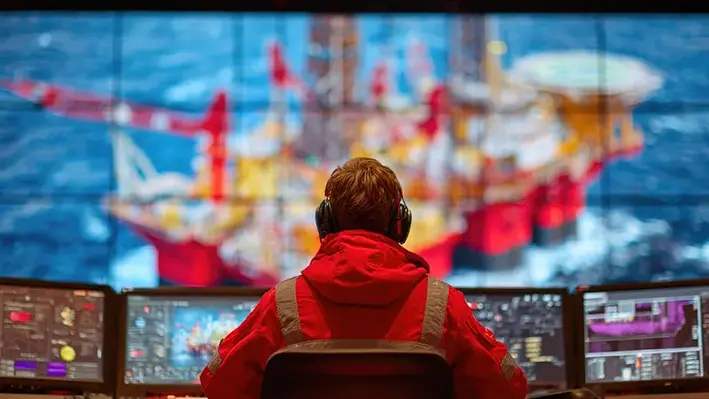

Improved efficiencies and experience may help to ease the cost of decommissioning Australia’s ageing offshore oil and gas infrastructure, a new report suggests.
The Department of Industry, Science, and Resources recently commissioned consultancy, Xodus Group, to explore the nation's overall decommissioning liabilities.
The report — Australian Offshore Oil & Gas Decommissioning Liability Estimate 2025 — estimates the industry will spend A$43.6bn through to 2070, rising to A$66.8bn when factoring in inflation.
This includes all fixed and floating facilities, rigid and flexible lines, subsea infrastructure and wells.
It added that around 55% of the decommissioning spend will occur before 2040, with 61% of the liability focused on Western Australia, 23% in Victoria and 16% off the Northern Territory.
The decommissioning of wells represents the single largest portion of the decommissioning liability, with an estimated cost of A$17.9bn, the report added, followed closely by pipeline decommissioning, with an estimated liability of A$17.85bn.
The report noted that decommissioning practice and technology have already improved since 2020, a trend that could continue, yielding benefits along the way.
There is an opportunity for further improvements in efficiency, it added, through operator cooperation when decommissioning, in addition to further technological advances and industry investment in onshore disposal and recycling.
“Possible cost reductions primarily relate to the opportunity for efficiencies, technological development and future infrastructure investments,” it stated.
These include:
Single and multiple operator campaigns to distribute the costs of equipment and vessels across multiple assets.
A dedicated disposal yard for deconstruction and cleaning.
Domestic steel recycling to reduce the amount of steel which is exported for recycling.
Aligning decommissioning campaigns with offshore wind construction to reduce vessel mobilisation rates.
Implementing new technologies and/or engineering practices to ensure that the most appropriate and efficient methodology, vessels, and equipment are used to perform decommissioning activities. Here, it cites the example of changes in the commonly accepted removal methodologies for certain infrastructure types.For example, reverse s-lay was previously considered the only methodology for recovery of pipelines — however, cut and lift now remains the most accepted method for pipeline removal.
Other findings in the report highlight the sheer magnitude of the task now facing contractors and operators across the board, with at least 2.7 million tonnes of infrastructure set to be removed, including a large portion of steel, with huge potential for local recycling.
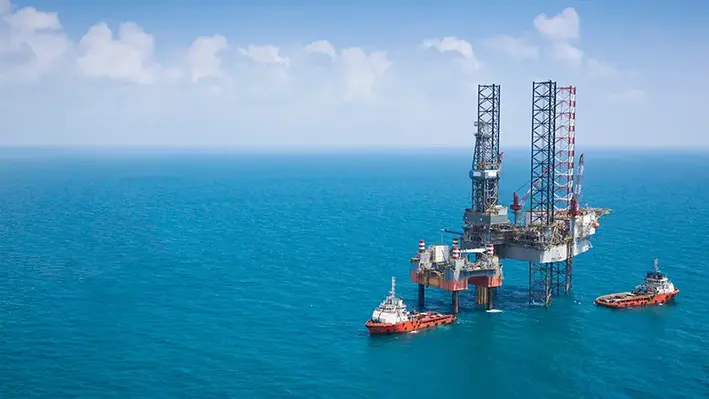
 Saudi Aramco has deepened its long-standing relationship with the United States by signing 17 new memoranda of understanding and agreements worth more than US$30bn, marking another significant step in its strategy to broaden global partnerships and support long-term growth.
Saudi Aramco has deepened its long-standing relationship with the United States by signing 17 new memoranda of understanding and agreements worth more than US$30bn, marking another significant step in its strategy to broaden global partnerships and support long-term growth.
These latest commitments span a wide range of sectors, from liquefied natural gas (LNG) and advanced materials to financial services and industrial supply chains, reinforcing Aramco’s position at the centre of global energy and technology collaboration.
The new deals build on the company’s earlier announcement in May 2025, when Aramco unveiled 34 MoUs and agreements with a combined potential value of around US$90bn. Together, the partnerships announced this year now approach an impressive US$120bn, reflecting a sharp expansion of its collaborative pipeline with American companies.
A major emphasis of the new agreements lies in LNG development. Aramco signed an MoU with MidOcean Energy linked to potential investment in the Lake Charles LNG project on the US Gulf Coast. The company is also assessing opportunities for cooperation with Commonwealth LNG on its liquefaction project in Louisiana, including discussions involving potential LNG and gas purchases through Aramco Trading. These moves highlight the Saudi energy giant’s increasing interest in global LNG markets as demand continues to evolve.
Aramco also strengthened ties with leading US suppliers such as SLB, Baker Hughes, McDermott, Halliburton, NESR, KBR, Flowserve, NOV, Worley and Fluor. These agreements reflect ongoing requirements across the company’s upstream and downstream operations, ensuring continued access to essential materials, engineering services and procurement support.
In the field of advanced materials, Aramco extended its existing MoU with Syensqo to examine opportunities for localising the production of carbon fibre and composite materials, a sector seen as increasingly important for industrial innovation and lightweight manufacturing.
Financial services were another key focus. Wisayah, Aramco’s investment arm, entered into asset management and investment agreements with Loomis Sayles, Blackstone and PGIM, while Aramco reached a strategic partnership with J.P. Morgan centred on cash account management.
Amin H. Nasser, Aramco President and CEO, said,“Since the 1930s, US firms have played a major role in supporting the company’s success… We expect the multi-billion dollar MoUs and agreements announced today to act as a springboard for further progress, strengthening Aramco’s longstanding legacy of collaboration with American counterparties and unlocking new value creation opportunities that promote innovation and growth."
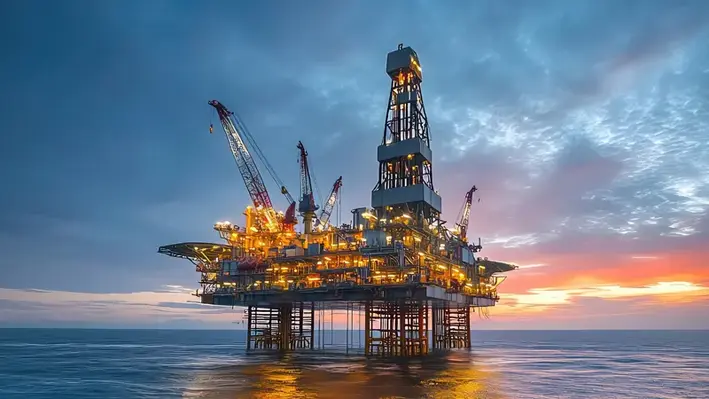
 Norwegian operator Aker BP has received approval from the country’s offshore safety regulator to deploy two of Island Offshore’s mobile offshore units across its operated fields on the Norwegian Continental Shelf.
Norwegian operator Aker BP has received approval from the country’s offshore safety regulator to deploy two of Island Offshore’s mobile offshore units across its operated fields on the Norwegian Continental Shelf.
According to the Norwegian Ocean Industry Authority (Havtil), the consent covers the use of the Island Constructor and Island Wellserver vessels for riserless light well intervention (RLWI) activities on all of Aker BP’s production licences, as mention in Offshore Energy.
The Island Constructor, delivered in 2008 and built to the Ulstein SX 121 design, is a multi-purpose offshore vessel with accommodation for 90 personnel. The unit has been cleared for Norwegian operations since obtaining its Acknowledgement of Compliance (AoC) from the Petroleum Safety Authority in April 2010.
Its sister vessel, the Island Wellserver, also delivered in 2008, is equipped to carry out a wide range of subsea and intervention tasks. These include light well intervention, construction and installation work, well securing, trenching, tower and module handling, plug and abandonment (P&A), crane operations, inspection, maintenance and repair (IMR), supply duties and X-tree installation. The 116-metre vessel remains a core asset for Island Offshore’s well intervention campaigns.
Island Offshore previously secured a two-year extension for Island Wellserver in May 2023 for continued light well intervention work on the NCS, with additional options for further activity. The Island Constructor received a separate consent in 2023 allowing RLWI operations without risers on production licences 359, 338 C and 028 B.
The company is also enhancing its fleet to support future demand. VARD recently marked the keel-laying of Island Offshore’s second hybrid-powered ocean energy construction vessel, underscoring the firm’s ongoing investment in next-generation offshore capabilities.
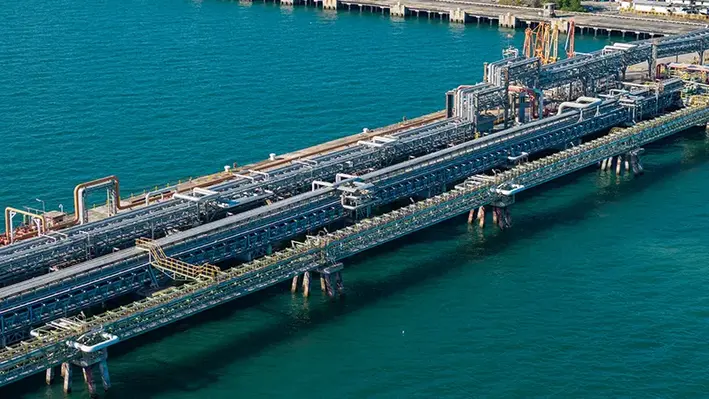
 The Bouri Gas Utilisation Project development in Libya that aims valourising the associated gas from the Bouri field will involve work class ROVs performing offshore touch down monitoring.
The Bouri Gas Utilisation Project development in Libya that aims valourising the associated gas from the Bouri field will involve work class ROVs performing offshore touch down monitoring.
Specialised vessels by Next Geosolutions called NG Worker and NG Surveyor will be deployed for the operations in line with around €8.5mn-worth survey and support-to-installation contract awarded by Saipem.
A significant project including complex construction and pipelines delivery, Saipem will be handling the installation of a new Gas Recovery Module, along with a series of upgrades and enhancements to the existing infrastructure. Its contract with Next Geosolutions include optional extensions following operations in Q4 2025.
NextGeo, which mainly deals in renewables and subsea power cables, is excited to have stepped into the oil & gas segment with this significant project from North Africa. It is an addition to another major contract from the same project that was landed last July by the company's affiliate Rana Subsea. Valued at approximately €62.6mn, the contract mandates Rana Subsea to provide specialised subsea services and installation support operations, extending through Q2 2026.
Giovanni Ranieri, CEO of Next Geosolutions, said, “The award of these new contracts with Saipem marks a significant step forward in the growth path of our Group. The joint presence of NextGeo and Rana Subsea in the same project clearly demonstrates the full complementarity of our expertise and our ability to operate in synergy across different yet closely integrated activities, positioning ourselves as a single, trusted partner for the development of complex projects. This is a collective achievement that strengthens our Group identity and represents a natural evolution towards an increasingly integrated, competitive, and operationally excellent model.”

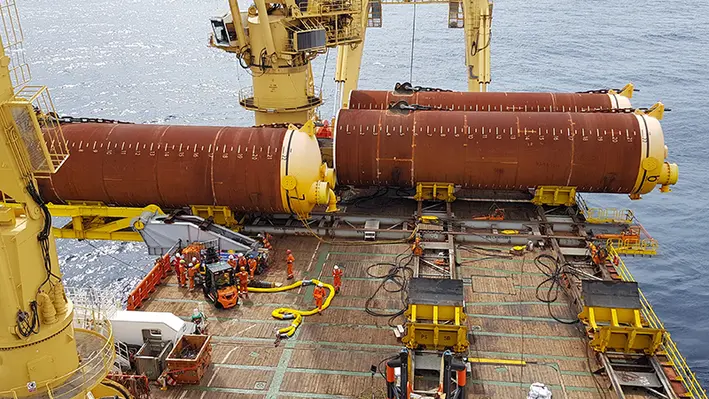 TechnipFMC has secured a major integrated EPCI contract from Italian energy company Eni for the deepwater Maha development offshore Indonesia, marking another significant step in their long-standing collaboration.
TechnipFMC has secured a major integrated EPCI contract from Italian energy company Eni for the deepwater Maha development offshore Indonesia, marking another significant step in their long-standing collaboration.
This project is particularly notable as it will be the first time Eni deploys TechnipFMC’s Subsea 2.0 configure-to-order technology in Indonesia, signalling a shift towards more standardised and efficient subsea solutions in the region.
Building on the companies’ previous successes at Jangkrik and Merakes, the new Maha facilities will be connected to the existing Jangkrik floating production unit (FPU). Under the scope of work, TechnipFMC will handle the design and manufacture of subsea tree systems, flexible flowlines, a manifold and associated control systems, and will also oversee the installation of the full subsea production package.
Although the precise contract value has not been disclosed, it is classified as a substantial award, indicating a worth in the region of US$250mn to US$500mn.
Jonathan Landes, president of subsea at TechnipFMC, said, “The Maha development provides a significant opportunity to strengthen our relationship with Eni and deliver greater timeline certainty through the application of Subsea 2.0 technologies and integrated delivery.
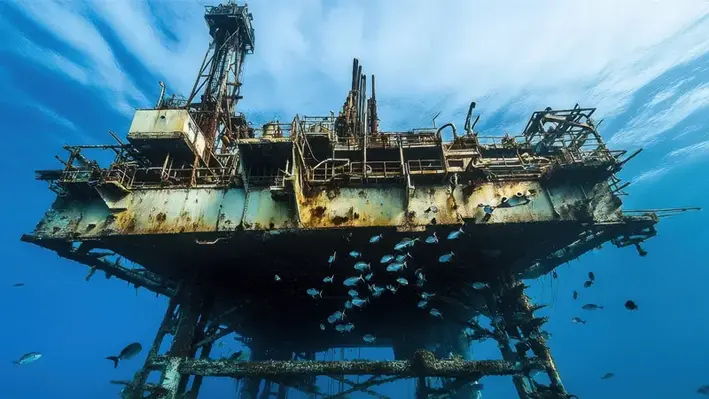
The offshore drilling industry is entering a period of vigorous growth as operators worldwide accelerate exploration and production to meet rising energy demand, according to The Business Research Company.
Valued at US$33.53bn in 2024, the sector is projected to climb to US$36.28bn in 2025. This reflects a compound annual growth rate of 8.2%.
The expansion follows a decade shaped by strategic discoveries of deepwater reserves, improvements in offshore infrastructure, and increasing global energy consumption. The depletion of easily accessible onshore resources and the availability of specialised offshore expertise have further reinforced activity across major basins.
Looking ahead, the offshore drilling market is forecast to reach US$49.67bn by 2029, maintaining the same growth trajectory of 8.2%.
This forward momentum is driven by renewed investment aimed at strengthening energy security, securing supply chains, and expanding access to capital. Governments and operators alike are also responding to evolving climate regulations and rising expectations around safety, prompting upgrades to equipment and operational standards.
Technological transformation is set to become a defining feature of the forecast period. Operators are expected to increase the use of digital tools, integrate drilling operations into hybrid renewable energy systems, and push further into ultra deepwater territories. Advances in seismic imaging and the adoption of digital twin technology will play a central role in improving accuracy, reducing risk, and optimising asset performance.
A primary force behind the market’s expansion is the steady rise in global consumption of oil and natural gas. These fuels remain vital to heating, power generation, and transport, making them central to energy systems around the world. Economic growth, increasing populations, and the continued shift toward cleaner burning fuels in power and transport sectors are amplifying demand.
Offshore drilling offers the ability to tap large reserves beneath the seabed, thereby ensuring continued supply. Data from the United States Energy Information Administration illustrates this trend. By the end of 2022, proven US crude oil and lease condensate reserves rose by 9% to reach 48.3 billion barrels. Natural gas reserves increased by 10%, climbing to 691 trillion cubic feet. Such figures highlight the sustained appetite for exploration and the vital role offshore assets will continue to play.
Across Europe, leading operators are pursuing competitive advantage through robotics and artificial intelligence. A notable example emerged in 2024 when Schlumberger and Equinor achieved a milestone in autonomous drilling on the Peregrino C platform. Using cloud based applications and AI driven planning tools, the partners succeeded in autonomously drilling 99 per cent of a 2.6 km section. The project demonstrated not only improved efficiency and lower operational costs but also meaningful reductions in carbon emissions.
Asia Pacific remained the world’s largest offshore drilling region in 2024, followed by Western and Eastern Europe, North America, South America, the Middle East, and Africa.
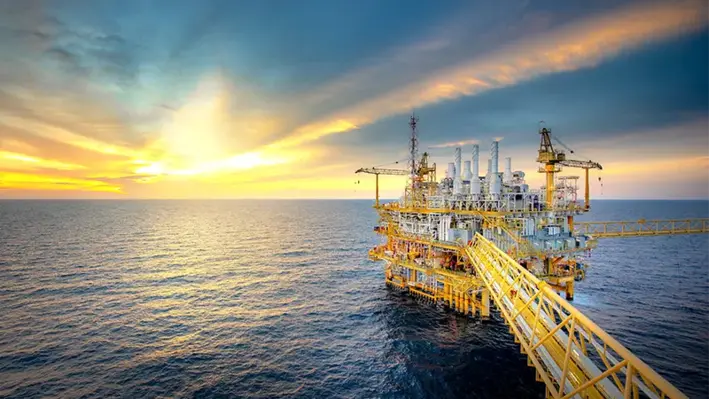
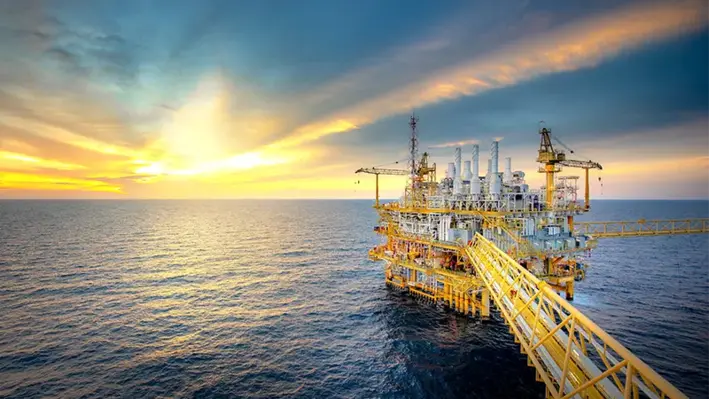 Ocean services provider DeepOcean has been awarded a contract by Equinor to provide various subsea construction and installation activities as part of the Snorre Export and Import Gas Project (SNEIG) for offshore execution in 2026
Ocean services provider DeepOcean has been awarded a contract by Equinor to provide various subsea construction and installation activities as part of the Snorre Export and Import Gas Project (SNEIG) for offshore execution in 2026
The SNEIG project is part of the broader Snorre Expansion Project, which aims to extend the production life of the Snorre oil and gas field – originally discovered in 1979 and operational since 1992 – beyond 2040. The Snorre field is located in the Tampen area of the northern North Sea, in water depths of 300–350 meters.
DeepOcean’s scope of work includes installation of a subsea safety isolation valve (SSIV), a subsea umbilical, and tie-in to the existing pipeline using connectors and associated tooling from the Pipeline Repair and Subsea Intervention (PRSI) pool.
DeepOcean will also provide preparatory subsea construction activities include isolation pig tracking, pipeline coating removal and cutting operations. Suitable crossings for the new umbilical will also be prepared and installed at the field before various mechanical completion and commissioning activities are performed.
“This is a complex subsea project that underlines Equinor’s dedication to responsible resource utilisation through life-of-field extensions. Through our in-depth knowledge of the specialised tooling from the PRSI pool, matched with our highly capable construction vessel fleet, I am confident that our skilled project team will ensure a safe and successful project execution in close cooperation with Equinor,” says Olaf A. Hansen, managing director of DeepOcean’s European operation
The award also includes the provision of onshore engineering, procurement and project management services. DeepOcean will manage the project out of its office in Haugesund, Norway.
Offshore operations will be executed during the summer season of 2026 using a subsea construction vessel from DeepOcean’s chartered fleet.
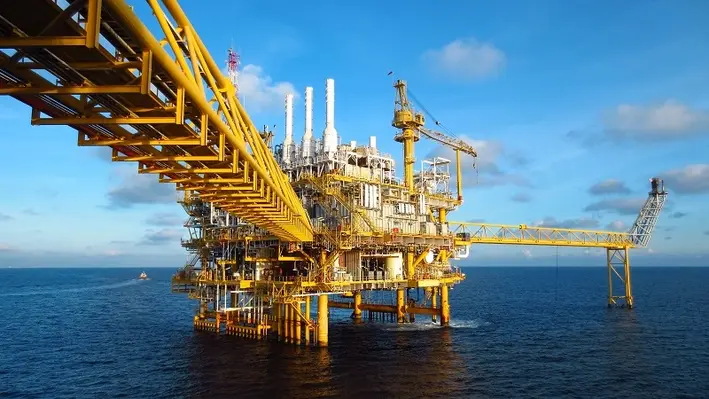
 Promethean has announced its Q4 Gulf of Mexico mobilisation, marking the beginning of a new operational phase dedicated to safe and complaint decommissioning.
Promethean has announced its Q4 Gulf of Mexico mobilisation, marking the beginning of a new operational phase dedicated to safe and complaint decommissioning.
Committed to operational excellence and continuous improvement, Promethean has embedded integrated data management and innovative technologies into its work processes after recognising that a significant number of safety incidents go unnoticed until they result in workplace incidents.
To address this critical gap, Promethean has partnered with Detect Technologies to implement an innovative visual AI monitoring system, T-Pulse, on decommissioning projects. The technology enhances HSER practices by integrating visual data sources, including fixed cameras and robotic systems to analyse imagery and extract actionable insights on safety compliance and risk mitigation.
Danny Turner, SVP Projects, said, “The meticulous planning over the last three months reflects Promethean Energy’s steadfast commitment to doing decommissioning the right way, with safety, environmental stewardship, a technical excellence, and cost efficiency at the forefront. Our structured approach ensures that every stage, from platform preparation to post-plugging verification, delivers long-term integrity and measurable value to our stakeholders.”
The scope of work is organised under five key operational phases:
This milestone underscores the operator’s continued leadership in delivering efficient and technically robust decommissioning programmes across the Gulf.
Page 2 of 109